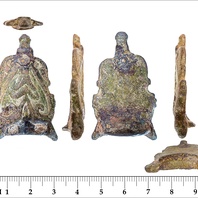
Viking Objects
Stirrup-Strap Mount (LIN-CFA7D4)
This example of an Anglo-Scandinavian cast copper-alloy stirrup-strap mount is classed as Williams Class A, Type 1A. It is decorated with a symmetrical pair of moulded beasts shown in profile in the Ringerike/Urnes style.
Read More

Viking Names
Snelland
The derivation of Snelland, in the Wraggoe Wapentake of Lincolnshire, is uncertain. The first element is either the Old Norse male personal name Snjallr or the Old English male personal name Snell, the second element is Old Norse lundr ‘a small wood’.
Read More

Viking Names
Broddi
Broddi, the first element in the place-name Broadholme, Lincolnshire, is otherwise mainly recorded in Iceland.
Read More

Viking Names
Elli
Elli is a mythological name from Old Norse elli ‘old age’. In Snorri Sturluson’s Edda, Thor battles with Elli who here is a personification of old age in the guise of an old woman. Even the mighty Thor cannot defeat her! The name Elli may be found as an element in some West Yorkshire place-names, but it cannot actually be distinguished from the Old English male personal name Ælla or Ælli.
Read More

Viking Names
Bruni
Brúni is a weak variant of Brúnn, originally an Old Norse male byname meaning ‘brown’. The latter name is recorded in some Norwegian place-names, but the independent instances may be loans from Continental Germanic. The weak form of the name, Brúni, was the name of one of the original settlers of Iceland in Landnámabók ‘The Book of Settlements’, but this name soon dropped out of use in Norway. The weak form is common in Swedish runic inscriptions (as bruni) and occasionally appears in Denmark. Brúni may be the first element in the place-name Brumby, Lincolnshire.
Read More
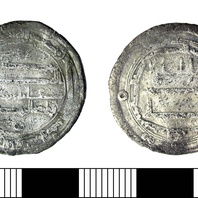
Viking Objects
Silver Dirham (DENO-07CCA4)
A complete silver dirham of Madinat al-Salam (Baghdad) reign of al-Mahdi Billah, 163 AH (780 AD). The dirham was a unit of weight used across North Africa, the Middle East, and Persia, with varying values which also referred to the type of coins used in the Middle East during the Viking Age. These coins were extremely prized possessions not only for their silver value but as a way of displaying one’s wealth and vast trade connections. Millions of Arabic dirhams would have been imported throughout the Viking world and are mostly found in hoards.
Read More
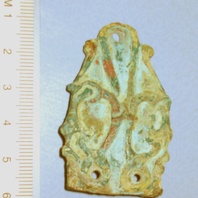
Viking Objects
Stirrup Strap Mount (NARC-C34373)
This cast copper-alloy stirrup strap mount is decorated with Ringerike style ornamentation and is classed under Williams Class A Type 1.
Read More

Viking Names
Brumby
The first element of the place-name Brumby, in the Manley Wapentake of Lincolnshire, is likely the Old Norse male personal name Brúni, although it has also been suggested it could be the Old Norse element brunnr ‘a well, spring’. The second element is bý ‘a farmstead, a village’.
Read More
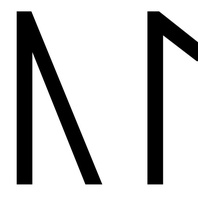
Viking Names
Tola
Tóla is a short form of names such as Þorlaug. It is an East Scandinavian name (Denmark, Sweden) and appears fairly frequently in Denmark. The name is also found in several Swedish runic inscriptions. It is attested in medieval documents from Lincolnshire referencing a woman who lived in Saltfleetby.
Read More
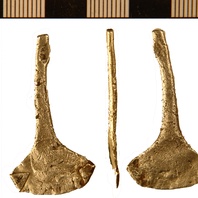
Viking Objects
Probable Thor’s Hammer Pendant (NLM-1A6811)
These may have been worn to show devotion to the god Thor, or to secure the god’s protection, although there is little evidence to support this interpretation. Pendants like this have been found made of lead, copper alloy, silver and gold, as well as other materials, showing that many different strata of society could have worn them. For more information on Scandinavian jewellery in England check out our blog: Brooches, Pendants and Pins: Scandinavian Dress Accessories in England.
Read More
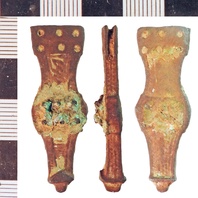
Viking Objects
Irish Strap-End (NLM-A30415)
This Irish-type strap-end has been classified as a Thomas Class F strap-end. One of the panels seems to have retained a possible reticulated interlace pattern while the inner area is decorated with six dots of inlay. Its manufacture is possibly traced to Dublin between c. 950-1050 and it is likely linked to Viking distribution of Irish artefacts. Strap-ends came in various styles and were fairly common throughout the Viking world. They were used to decorate the ends of belts and to stop them getting damaged.
